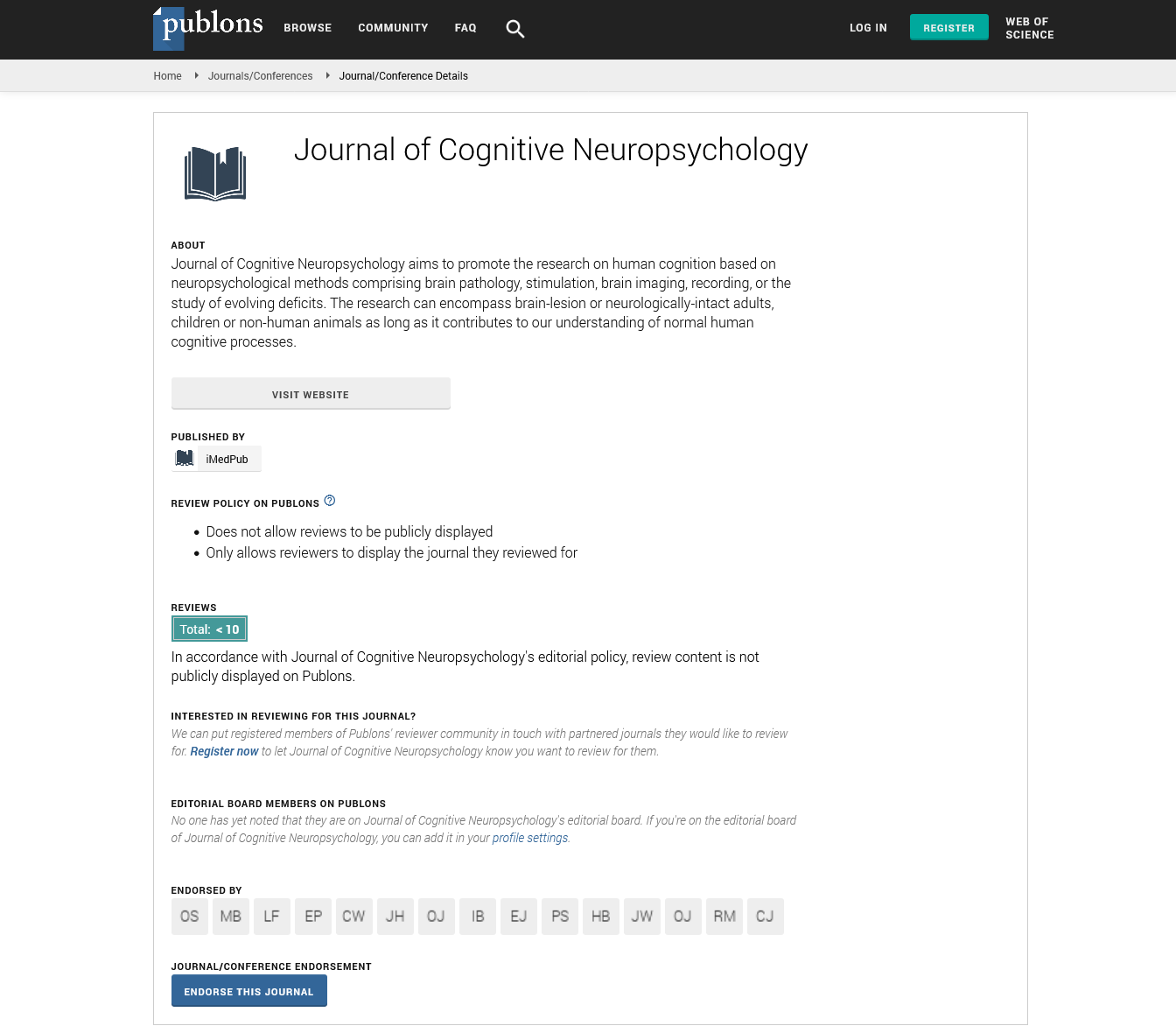SENSORY MODULATION IN REHABILITATION
World Congress on Neurorehabilitation
July 05-06 2021 | Webinar
Balakrishnan Shankar, Kesavamoorthy Bhanu, Avanthvadi Venkatesan Srinivasan
Resident, Institute of Neurology, Madras Medical College, Chennai Professor & Head of the Department, Institute of Neurology, Madras Medical College, and Chennai. Emeritus Professor, Dr. M.G.R. Medical University, Institute of Neurology, Madras Medical College, Chennai
ScientificTracks Abstracts: J Cog Neu
Abstract
The somatosensory system is a complex network of neurons, synapses, and receptors, through which we perceive and navigate our environment. The afferent sensory system interacts via direct and indirect projections with the brainstem, cerebellum, subcortical, and cortical structures. In late 19th century the role of sensory system in modulation of physical and mental rehabilitation was exploited. Sensory modulation helps in modulation the synaptic plasticity and long term potentiation and depression. Synaptic plasticity is a gradual process of ability of synapses to strengthen or weaken, in response to increases or decreases in their activity. The long-term potentiation (LTP) is a long-lasting enhancement in signal transmission between two neurons that results from stimulating them synchronously. Sensory modulation is applied clinically in rehabilitation of various neurological conditions like motor rehabilitation after stroke, via electrical stimulation, Tactile stimulation of the faucial pillars used for the treatment of dysphagia. Mirror therapy for phantom limb pain where the Neuromatrix theory of phantom limb pain explain tactile and proprioceptive inputs from the face and tissues near the residual limb take over specific regions of the brain. Extinction of referred sensation based on topographically organised inter-hemispheric inhibition mediated by commissural pathways helps in alleviating symptoms of phantom limb pain. Geste antagoniste or sensory trick was alleviating manoeuvres relives dystonia. Virtual reality (VR) environments used to simulate natural events and social interactions in rehabilitation of motor weakness. Thus Sensory modulation has the capacity to regulate and organize the degree, intensity and nature of responses to sensory input in a graded and adaptive manner, which allows the individual to achieve and maintain an optimal range of performance and to adapt to challenges in daily life.
Google Scholar citation report
Citations : 8
Journal of Cognitive Neuropsychology received 8 citations as per Google Scholar report
Journal of Cognitive Neuropsychology peer review process verified at publons
Abstracted/Indexed in
- Google Scholar
- Publons
- MIAR
Open Access Journals
- Aquaculture & Veterinary Science
- Chemistry & Chemical Sciences
- Clinical Sciences
- Engineering
- General Science
- Genetics & Molecular Biology
- Health Care & Nursing
- Immunology & Microbiology
- Materials Science
- Mathematics & Physics
- Medical Sciences
- Neurology & Psychiatry
- Oncology & Cancer Science
- Pharmaceutical Sciences
